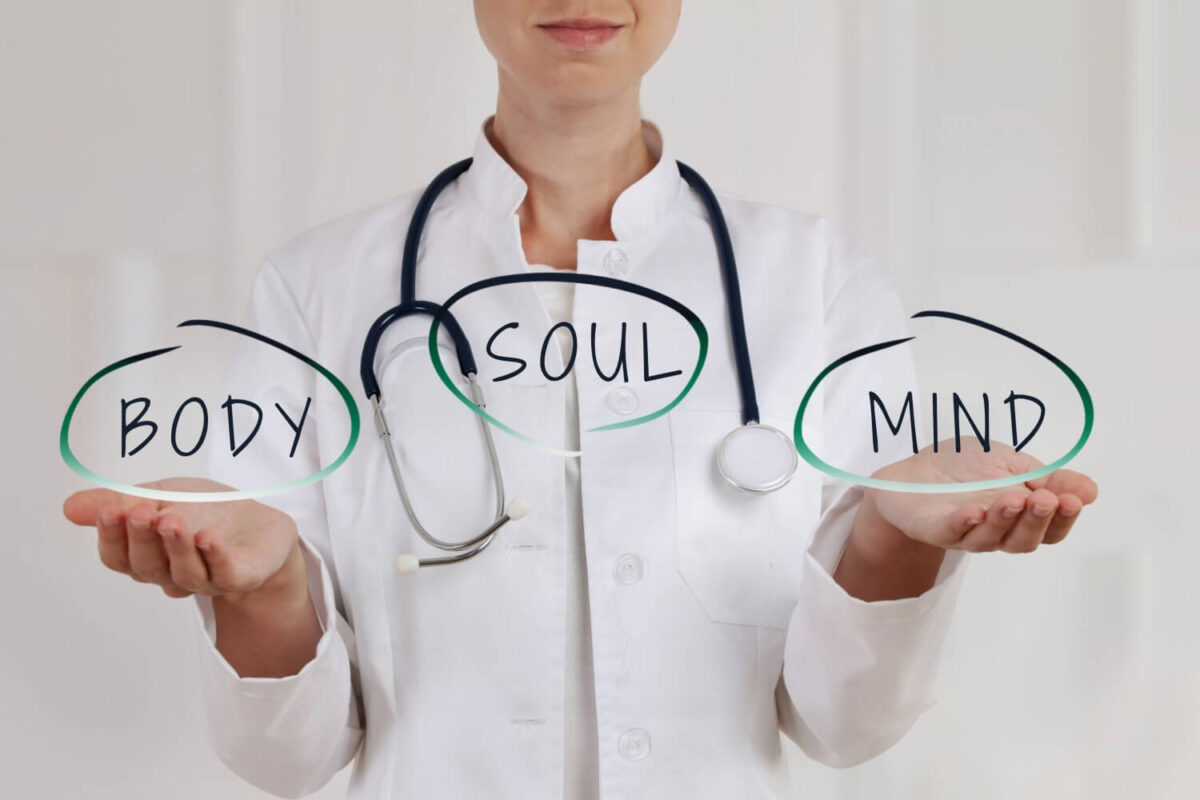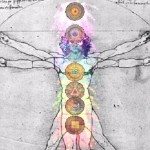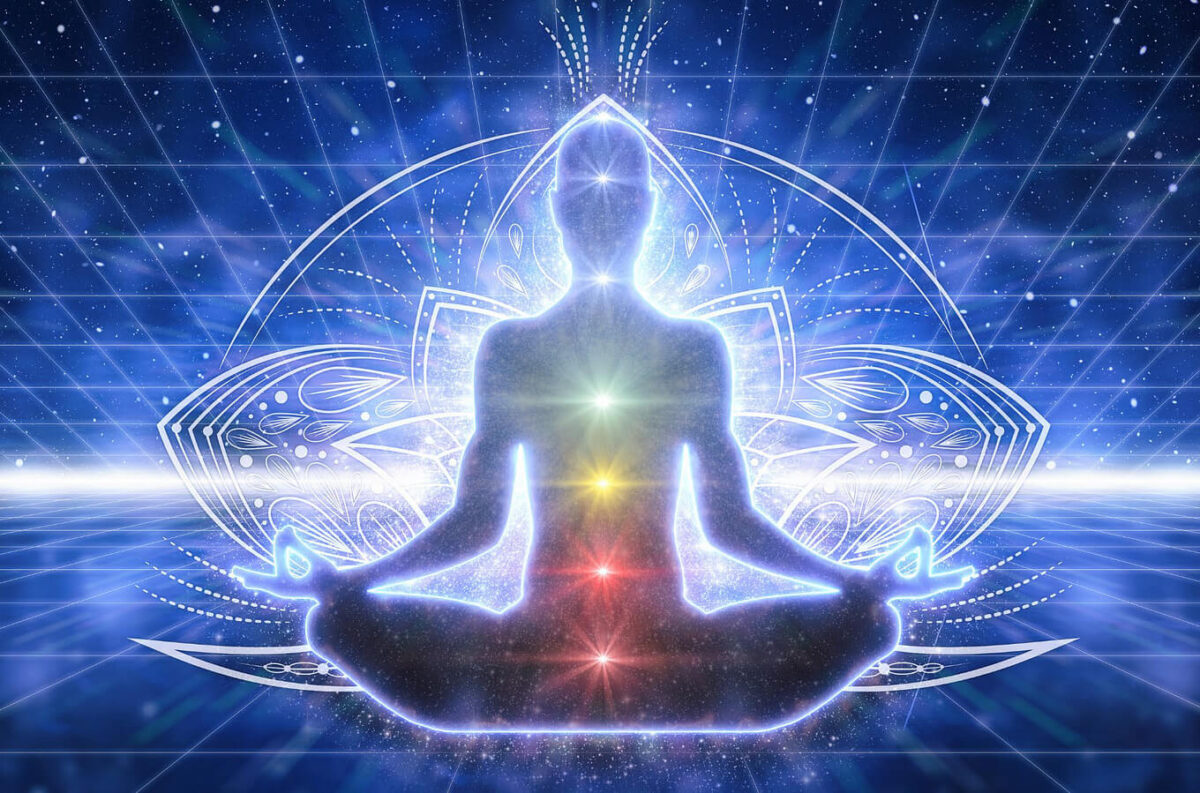What is Holistic Health

What is Holistic Health
A recent study on Why Patients use Alternative Medicine Results of a National Study by John A. Astin, Ph.D. reported along with being more educated and reporting being more acutely aware of their poorer health status, the majority of alternative medicine users appear to be doing so …..because they find these health care alternatives to be more congruent with their own values, beliefs, and philosophical orientations toward health and life. I want those receptive to receive the best value and quality information, skills and therapy that they can use right away to transform their health, wealth and relationships.
The twelve American Board of Holistic Integrative Medicine (ABHM) principles of holistic medical practice are:
1. Unconditional love is life’s most powerful healer.
2. Optimal health is much more than the absence of sickness
3. Illness is viewed as a manifestation of the whole person, not as an isolated
event.
4. Holistic physicians embrace a variety of safe, effective options in diagnosis
and treatment, including:
a. education for lifestyle changes and self-care
b. complementary approaches; and
c. conventional drugs and surgery.
5. Searching for the underlying cause of disease is preferable to treating
symptoms alone.
6. Holistic physicians expend as much effort to establishing what kind of
patient has a disease as they do establishing what kind of disease a patient
has.
7. Prevention is preferable to treatment and is usually more cost-effective.
The most cost-effective approach evokes the patient’s own healing
capabilities.
8. A major determinant of healing outcomes is the quality of the relationship
established between physician and patient, in which patient autonomy is
encouraged.
9. The ideal physician-patient relationship considers the needs, desires,
awareness and insight of the patient as well as those of the physician.
10. Physicians significantly influence patients by their example.
11. Illness, pain, and the dying process can be learning opportunities for
patients and physicians.
12. Holistic physicians encourage patients to evoke the healing power of love,
hope, humor and enthusiasm, and to release the toxic consequences of
hostility, shame, greed, depression,
HISTORY of HOLISTIC and ENERGY MEDICINE
 In the 1960s Humanistic Psychology became the first major “alternative” movement in modern Health Care. In the 1980s Holistic Medicine was introduced; soon thereafter, the terms Complementary, Integral, Quantum, Integrative, and Alternative Medicine became synonyms for concepts of Health Care that did not fit into the allopathic convention that has dominated American Medicine for almost a century. In 1989, Dr. Elmer Green and colleagues substantiated the comprehensive and inclusive term, “Energy Medicine” by founding The International Society for the Study of Subtle Energies and Energy Medicine (ISSSEEM). A few years later, Congress mandated the National Institutes of Health Office of Alternative Medicine, later converted into the Institute of Complementary and Alternative Medicine, and most recently designated as the National Center for Complementary and Alternative Medicine. NCCAM currently identifies five fields of complementary and alternative medicine:
In the 1960s Humanistic Psychology became the first major “alternative” movement in modern Health Care. In the 1980s Holistic Medicine was introduced; soon thereafter, the terms Complementary, Integral, Quantum, Integrative, and Alternative Medicine became synonyms for concepts of Health Care that did not fit into the allopathic convention that has dominated American Medicine for almost a century. In 1989, Dr. Elmer Green and colleagues substantiated the comprehensive and inclusive term, “Energy Medicine” by founding The International Society for the Study of Subtle Energies and Energy Medicine (ISSSEEM). A few years later, Congress mandated the National Institutes of Health Office of Alternative Medicine, later converted into the Institute of Complementary and Alternative Medicine, and most recently designated as the National Center for Complementary and Alternative Medicine. NCCAM currently identifies five fields of complementary and alternative medicine:
§ Alternative Medical Systems
§ Mind-Body Interventions
§ Biological-based Therapies
§ Manipulative and Body-based Methods
§ Energy Therapies
Energy medicine as it is practiced and studied is not restricted to what NCCAM includes in Energy Therapies, but also overlaps with practices in the other four NCCAM fields, such as the Alternative Medical Systems of Ayurvedic Medicine and Traditional Chinese Medicine.
During this forty-five year evolution, Americans and Canadians have embraced the many therapeutic approaches offered by the proponents of these movements. Now, each year almost half of Americans use some alternative therapy. Medical schools and hospitals are tentatively offering a few courses and programs which barely scratch the surface of the rich resources of Humanistic, Holistic, Complementary, Integral, Quantum Integrative, Alternative, and Energy Medicine.
The Field of Energy Medicine
Energy Medicine includes all concepts of energy: light, sound, electro-magnetism, body, mind and spirit. In addition to concepts central to electro-chemical physiology, older traditions of “life force” or “élan vital” are commonly found in the discourses of Energy Medicine. From Taoist alchemy and Chinese Medicine comes the principle of Chi, with its Cosmic and Microcosmic cycles and flows through the channels or meridians in the physical body. From Yogic Hinduism comes the breath or Prana, and the principles of multiple energy vortices in the body – the Chakras, and especially the concepts of multiple bodies beyond the flesh and blood physiological body, conceived in various systems as layers such as the etheric body, the astral body, the emotional body, the mental body, and the spirit bodies.
Many roots and paths have contributed to these ecumenical and syncretic endeavors that are loosely allied around the concept of energy. The psychology of Carl Jung, with his conception of the collective unconscious and especially his emphasis of myth and Kundalini Yoga is a major root. Another main stream is Christian mysticism in its many forms. Christian Science and the spiritual healing practices of both conventional religious denominations and the “New Thought” churches such as Unity and Science of Mind are also threads that underlie various practices in energy medicine. Recent studies on the healing efficacy of prayer are contributing to the resurgence in spiritual healing. Northern European folk healing traditions have come in through Naturopathy and the teachings of skilled healers such as Olga Worral and Hanna Kroeger. On the more intellectual side, the emphasis on Spirit also has roots in American Transcendentalism and from Northern Europe, in German Idealism, which was heavily influenced both by the Hermetic Alchemical tradition coming via the Arabs in the fourteenth century from late Alexandrian Greek culture, and by Chinese Alchemical traditions coming into Continental Europe in the seventeenth century via the
Jesuits, such as in the work of Athanasias Kircher. The Hindu Yogic revival in Europe comes in the Nineteenth century such as through the Theosophy of Madam Blavatsky and the later Anthroposophy of Rudolph Steiner, and then again in the second half of the Twentieth century in both Europe and America, as part of the enthusiasm for meditative disciplines and consciousness studies. The work of Dr.’s Elmer and Alyce Green in the 1960s with their colleagues at the Menninger Clinic in Topeka,
Kansas, pioneered investigations in biofeedback studies and what they preferred to call voluntary control of autonomic physiological processes. The Green’s world view and research questions were influenced by their own exposure to traditions of psychic healing in the early Twentieth century and their researches in India in the 1960s, studying the physiology of Yogic adepts and Tibetan Tantric trance meditators. Dr. Green and associates founded ISSSEEM as an interdisciplinary association for the study of energetic and informational interactions, to explore the concepts of subtle energies in the experience of consciousness, healing, and human potential. ISSSEEM is intended as a bridging organization for scientists, clinicians, therapists, healers, and any other interested people. This is an interdisciplinary professional organization representing the entire field of Energy Medicine. (Williams, 2004)
What is Holistic Medicine
The following is the “Holistic Health” chapter from the critically acclaimed book, The Illustrated Encyclopedia of Body-Mind Disciplines, published by The Rosen Publishing Group in 1999 and presented here with permission. This material was written by AHHA President, Suzan Walter and includes excerpts from other articles.
Are you confused about the meaning of holistic? Have you ever been discussing holistic health and discovered that the other person was defining holistic in a totally different way than you? This is not surprising, since there are no accepted standard definitions for holistic, holistic health, or holistic medicine. Most usage falls within two common definitions:
- Holistic as a whole made up of interdependent parts. You are most likely to hear these parts referred to as 1) the mind/ body connection, 2) mind/ body/ spirit, or 3) physical/ mental/ emotional/ spiritual aspects. When this meaning is applied to illness, it is called holistic medicine and includes a number of factors, such as 1) dealing with the root cause of an illness, 2) increasing patient involvement, and 3) considering both conventional (allopathic) and complementary (alternative) therapies.
- Holistic as a synonym for alternative therapies. By this definition, “going holistic” means using an alternative to or complimentary method with conventional medical options and/or using alternative treatment exclusively. This meaning mainly relates to illness situations, and sometimes is used for alternative energy psychology therapies.
(Please note I see Holistic also as a complimentary use of health care which can work along side of traditional forms of therapy if the client so chooses)
The expanded perspective of holistic as considering the whole person and the whole situation allows us to apply the word holistic as an adjective to anything. For example, we can develop a new project at work or re-organize our life to be more in line with mind body spirit integrating the larges context with the smallest context of our lives holistically. “When you know “What” your lives about you know how to live it.” ie. living by Principles of Meta psychiatry for example. When illness is involved, clients gain more understanding by seeing a mind body spirit connection rather than seeing their illness as an external victimization. This definition of holistic allows us to integrate both conventional and complementary therapies. Consider adopting this holistic approach to your life.
Holistic Health is actually an approach to life. Rather than focusing on illness or specific parts of the body, this ancient approach to health considers the whole person and how he or she interacts with his or her environment. It emphasizes the connection of mind, body, and spirit. The goal is to achieve maximum well-being, where everything is functioning the very best that is possible. With Holistic Health people would not see their clients as broken nor would the clients see themselves as such. Clients would accept responsibility for their own level of well-being, and everyday choices and are partners with the therapist and are used to taking charge of their own health.
How Holistic Health Developed
Ancient healing traditions, as far back as 5,000 years ago in India and China, stressed living a healthy way of life in harmony with nature. The Chinese approach to medicine saw that illness was more about balancing and unblocking the clients energy to regain natural health and wholeness. Socrates (4th century BC) warned against treating only one part of the body “for the part can never be well unless the whole is well.” Although the term holism was introduced by Jan Christiaan Smuts in 1926 as a way of viewing living things as “entities greater than and different from the sum of their parts,” it wasn’t until the 1970s that holistic became a common adjective in our modern vocabulary.
Holistic concepts fell temporarily out of favor in Western societies during the 20th century. Scientific medical advances had created a dramatic shift in the concept of health. Germs were identified as outside sources causing disease. Gaining health became a process of killing microscopic invaders with synthesized drugs. People believed that they could get away with unhealthy lifestyle choices, and modern medicine would “fix” them as problems developed.
However, for some conditions medical cures have proven more harmful than the disease. In addition, many chronic conditions do not respond to scientific medical treatments. In looking for other options, people are turning back to the holistic approach to health and healing. The Holistic Health lifestyle is regaining popularity each year, as the holistic principles offer practical options to meet the growing desire for enjoying a high level of vitality and well-being.
Holistic Health The Basic Principles
Holistic Health is based on the law of nature that a whole is made up of interdependent parts. The earth is made up of systems, such as air, land, water, plants and animals. If life is to be sustained, they cannot be separated, for what is happening to one is also felt by all of the other systems. In the same way, an individual is a whole made up of interdependent parts, which are the physical, mental, emotional, and spiritual. When one part is not working at its best, it impacts all of the other parts of that person. Furthermore, this whole person, including all of the parts, is constantly interacting with everything in the surrounding environment. For example, when an individual is anxious about a history exam or a job interview, his or her nervousness may result in a physical reaction–such as a headache or a stomach ache. When people suppress anger at a parent or a boss over a long period of time, they often develop a serious illness–such as migraine headaches, emphysema, or even arthritis.
The principles of Holistic Health state that health is more than just not being sick. A common explanation is to view wellness as a continuum along a line. The line represents all possible degrees of health. The far left end of the line represents premature death. On the far right end is the highest possible level of wellness or maximum well-being. The center point of the line represents a lack of apparent disease. This places all levels of illness on the left half of the wellness continuum. The right half shows that even when no illness seems to be present, there is still a lot of room for improvement.
Holistic Health is an ongoing process. As a lifestyle, it includes a personal commitment to be moving toward the right end of the wellness continuum. No matter what their current status of health, people can improve their level of well-being. Even when there are temporary setbacks, movement is always headed toward wellness.
The U.S. Centers for Disease Control and Prevention report that the key factors influencing an individual’s state of health have not changed significantly over the past 20 years. Quality of medical care is only 10%. Heredity accounts for 18% and environment is 19%. Everyday lifestyle choices are 53%. The decisions people make about their life and habits are, therefore, by far the largest factor in determining their state of wellness.
The most obvious choices people make each day is what they “consume”–both physically and mentally. The cells in a person’s body are constantly being replaced. New cells are built from what is available. Harmful substances or lack of needed building blocks in the body can result in imperfect cells, unable to do what is required to keep that person healthy. Similarly, on the non-physical level, a person’s mental attitudes are “built” from what they see and hear.
The majority of illnesses and premature death can be traced back to lifestyle choices. There are the well-known dangers connected with drugs, alcohol, nicotine, and unprotected sexual activity. Less recognized is the impact of excesses in things like sugar, caffeine, and negative attitudes. Combined with deficiencies in exercise, nutritious foods, and self-esteem, these gradually accumulate harmful effects. With time they diminish the quality of the “environment” within that human being, and can set the stage for illness to take hold. Quality of life, now and in the future, is actually being determined by a multitude of seemingly unimportant choices made everyday.
How Holistic Health Is Practiced
While preventing illness is important, Holistic Health focuses on reaching higher levels of wellness. The right half of the wellness continuum invites people to constantly explore which everyday actions work for them and discovering what is appropriate to move them toward maximum well-being. People are motivated by how good it feels to have lots of energy and enthusiasm for life, knowing that what they are doing that day will allow them to continue to feel this great for years to come.
When disease and chronic conditions do occur, the Holistic Health principles can also be applied. The term is usually changed to holistic medicine, and additional factors are added. The healthcare professionals using the holistic approach work in partnership with their patients. They recommend treatments that support the body’s natural healing system and consider the whole person and the whole situation.
A holistic approach to healing goes beyond just eliminating symptoms. For example, taking an aspirin for a headache would be like disconnecting the oil light on the dash of a car when it flashes. The irritation is eliminated, but the real problem still exists. In holistic medicine, a symptom is considered a message that something needs attention. So, the symptom is used as a guide to look below the surface for the root cause. Then what really needs attention can be addressed.
The Benefits of Holistic Health
Holistic Health supports reaching higher levels of wellness as well as preventing illness. People enjoy the vitality and well-being that results from their positive lifestyle changes, and are motivated to continue this process throughout their lives.
AHHA’s Holistic Approach
The American Holistic Health Association (AHHA) promotes holistic health as an approach to creating wellness which encourages you to:
- Balance and integrate your physical, mental, emotional and spiritual aspects
- Establish respectful, cooperative relationships with others and the environment
- Make wellness-oriented lifestyle choices
- Actively participate in your health decisions and healing process.
Resources:
For More information
Comparing Holistic Health with Conventional Medicine Click Here articles.asp?Id=38
American Holistic Health Association (AHHA)
Dept. R
PO Box 17400
Anaheim, CA 92817-7400 USA
Phone: (714) 779-6152
E-mail: [email protected]
Website: http://ahha.org
This nonprofit educational organization has compiled lists of self-help resources available in the United States. These free materials and a booklet, Wellness From Within: The First Step, which introduces the holistic approach to creating wellness, are available on the Internet or by mail.
Graduate Certificate Program in Holistic Health Care
Western Michigan University
Holistic Health Department
1903 West Michigan Avenue
Kalamazoo, MI 49008 USA
Phone: (269) 387-2650
Fax: (269) 387-3348
E-Mail: [email protected]
Web site: www.wmich.edu/holistichealth/
Unique opportunity to study holistic health care in an accredited academic program. Consists of 18 semester hours of study in holistic health care and related topics. Can be taken as an independent certificate or can be used to supplement graduate training in related fields. Three main areas of holistic health care (promotion, prevention, and treatment) are addressed through a combination of education, research, promotion, training, administration, program planning, and program development efforts. Graduates are able to work within their chosen professional areas from a holistic perspective.






